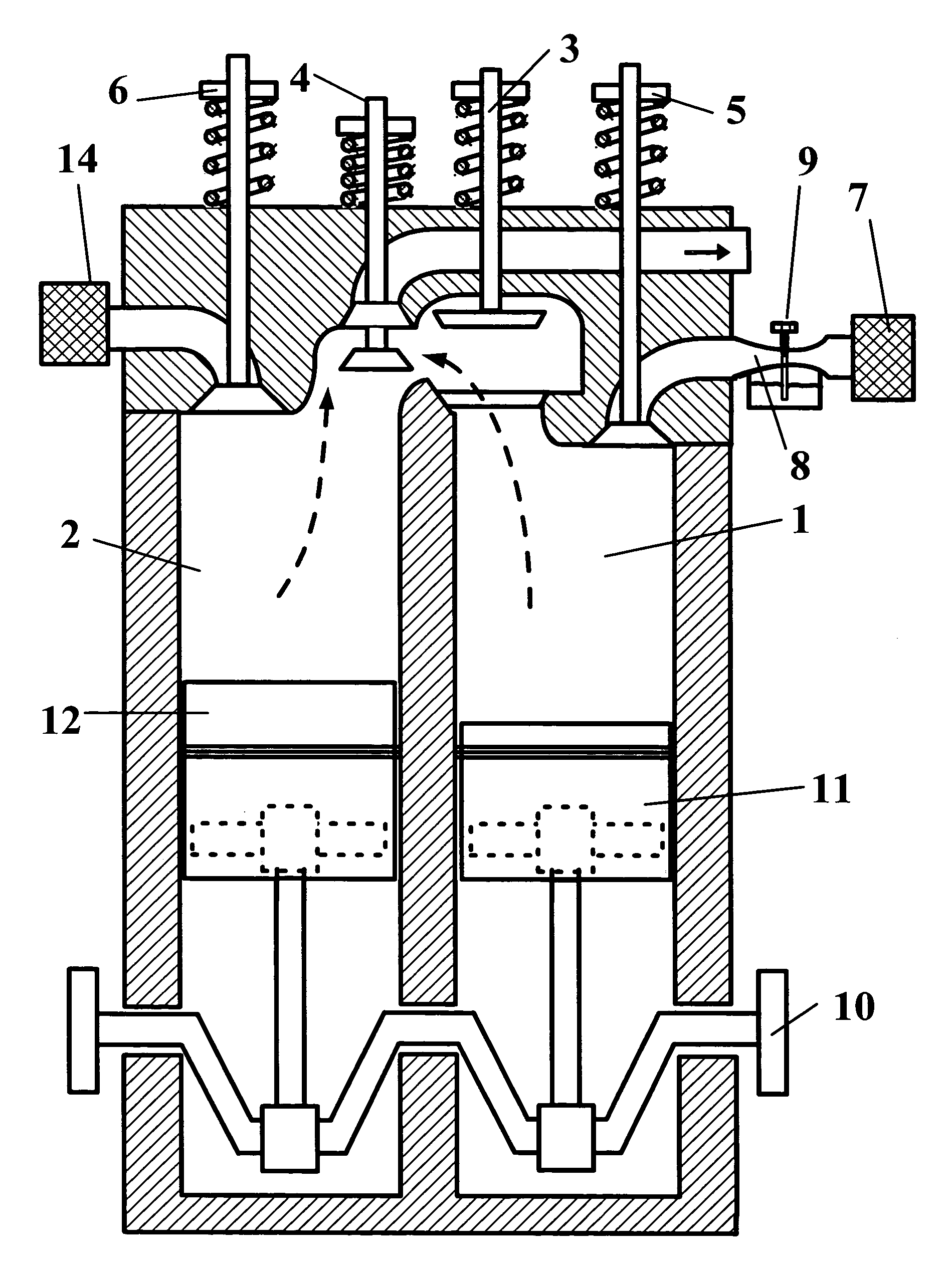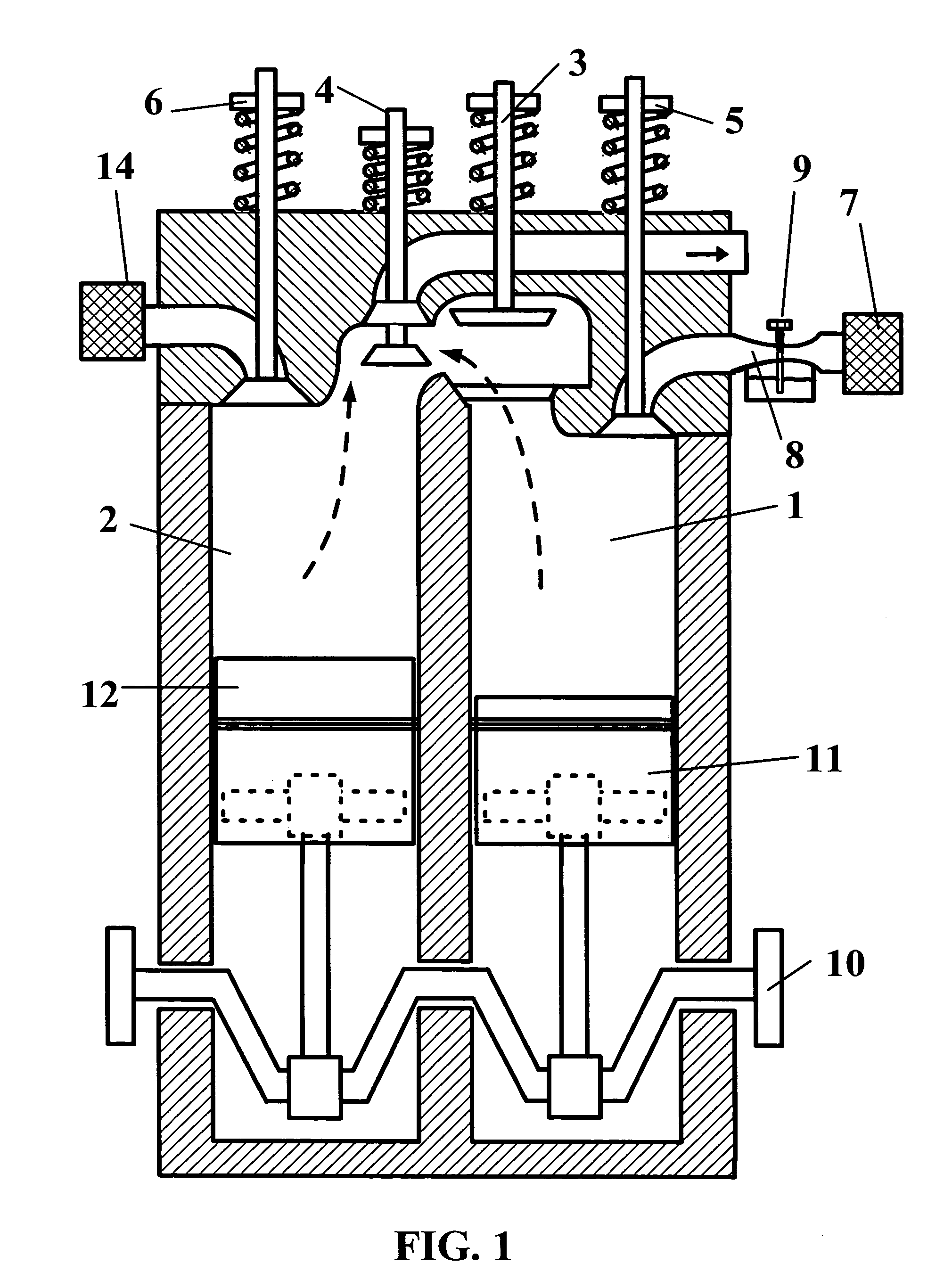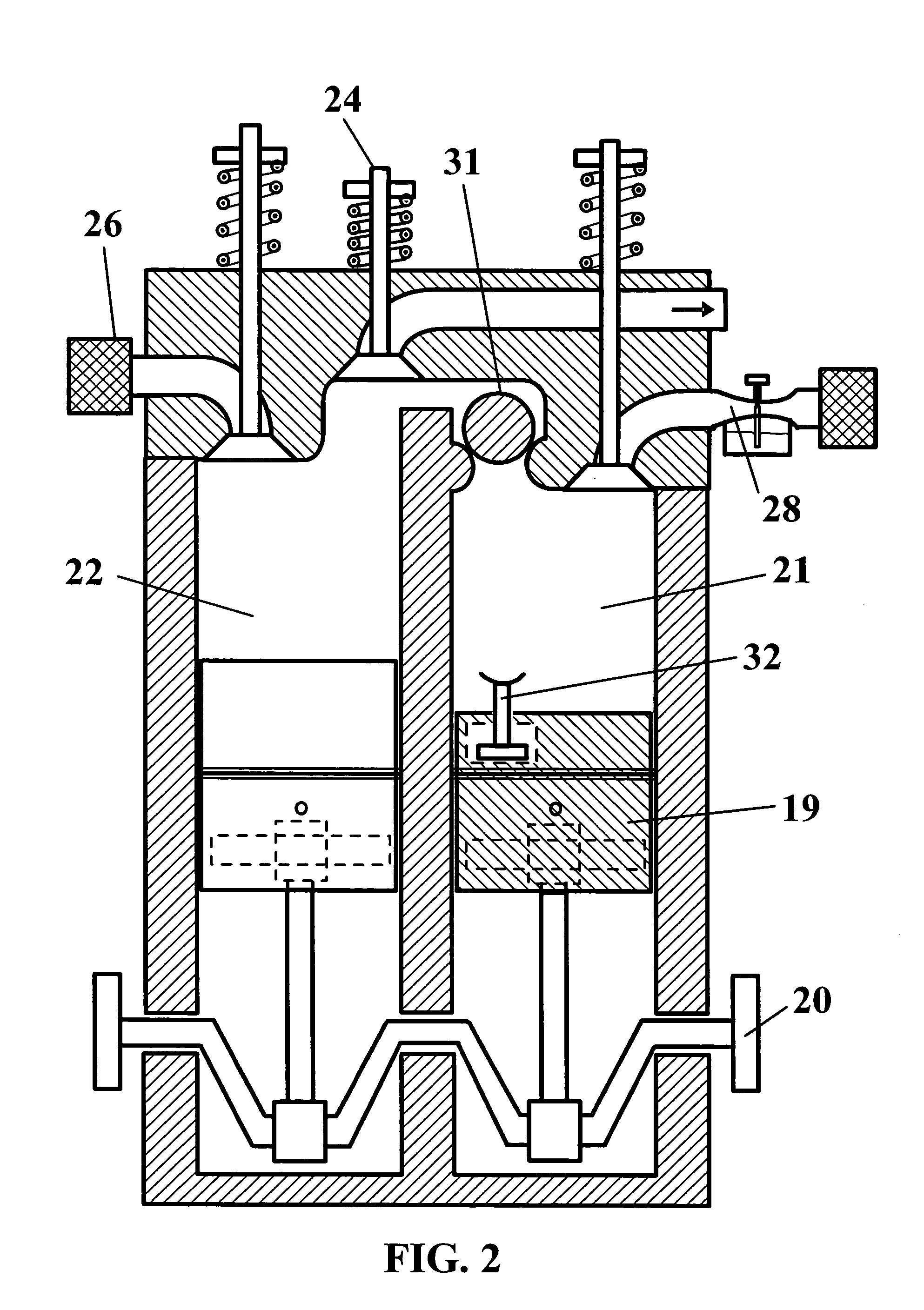Compression ignition engine by air injection from air-only cylinder to adjacent air-fuel cylinder
a compression ignition and air injection technology, applied in combustion engines, machines/engines, engine controllers, etc., can solve problems such as sudden ignition near top dead center, and achieve the effect of enhancing reliability and increasing the effective compression ratio
- Summary
- Abstract
- Description
- Claims
- Application Information
AI Technical Summary
Benefits of technology
Problems solved by technology
Method used
Image
Examples
Embodiment Construction
[0039]In the preferred embodiment, to operate a piston internal combustion engine on the Compression Ignition By Air Injection (CIBAI) cycle requires at least one pair of pistons operating in phase, with their heads adjacent to one another. One of the pistons compresses an air-fuel mixture (or fuel only) to a pressure ratio limited by knock as in spark ignition engines. The other piston compresses only-air to high-pressure. When both pistons reach near Top-Dead-Center, the cylinder-connecting valve is opened without altering their combined compression volumes. As the high-pressure air volume is smaller, much of the air injects into the air-fuel mixture. The sudden compression causes the fuel-air mixture to detonate with the piston at top dead center or at constant volume. The combustion pressure rise pushes some of the combustion products back into the air cylinder. During the subsequent expansion stroke the cylinder-connecting valve remains open to equalize the pressure on both pis...
PUM
 Login to View More
Login to View More Abstract
Description
Claims
Application Information
 Login to View More
Login to View More - R&D
- Intellectual Property
- Life Sciences
- Materials
- Tech Scout
- Unparalleled Data Quality
- Higher Quality Content
- 60% Fewer Hallucinations
Browse by: Latest US Patents, China's latest patents, Technical Efficacy Thesaurus, Application Domain, Technology Topic, Popular Technical Reports.
© 2025 PatSnap. All rights reserved.Legal|Privacy policy|Modern Slavery Act Transparency Statement|Sitemap|About US| Contact US: help@patsnap.com



